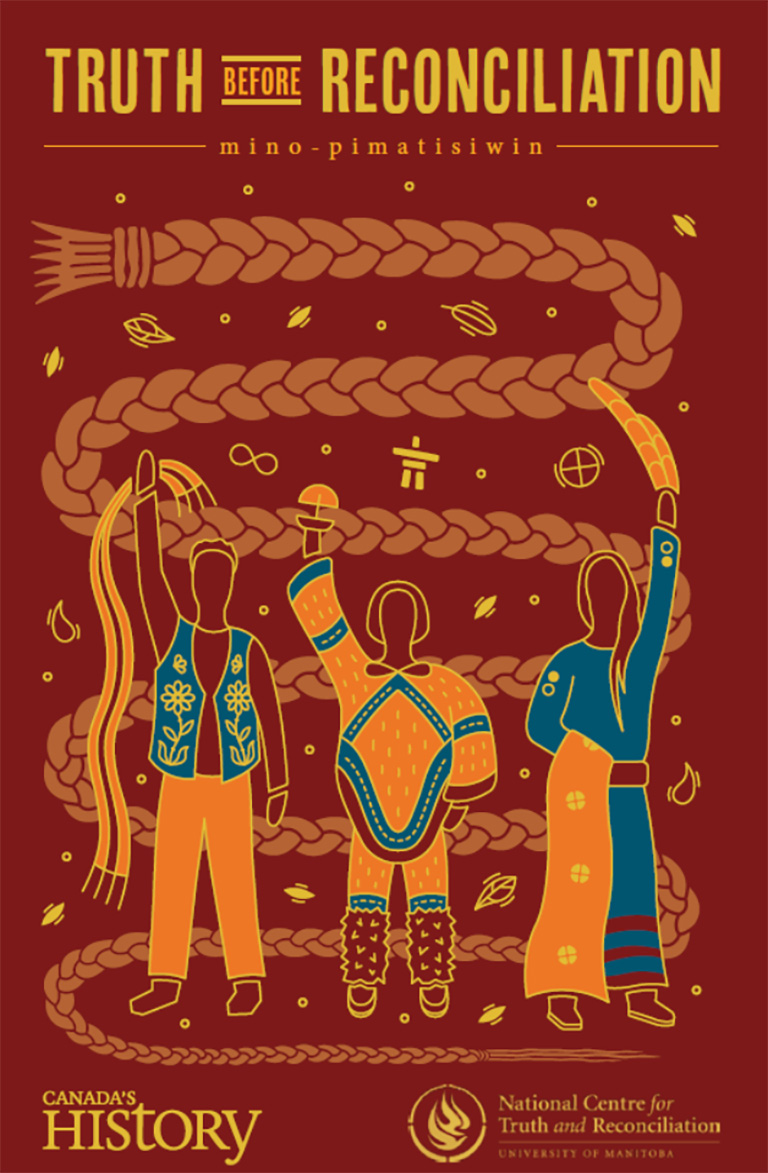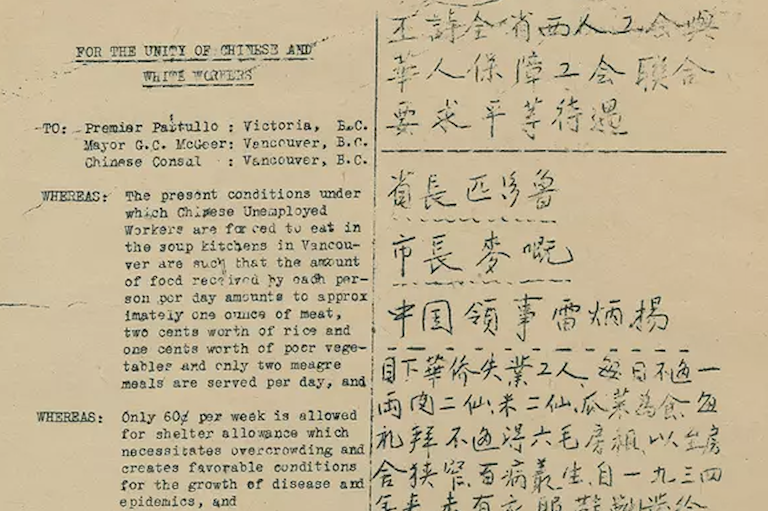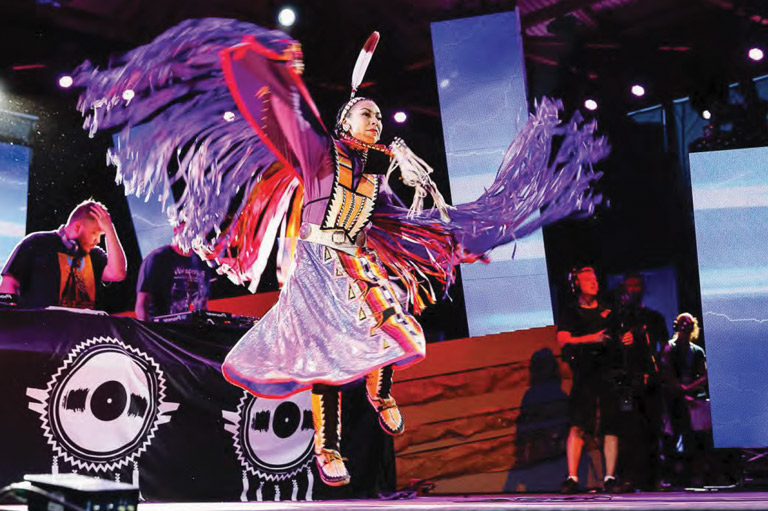Promises of Reconciliation: Exploring the Truth and Reconciliation Commission’s Bentwood Box
Mino-pimatisiwin: Living the Good Life Canada’s National History Society with the National Centre for Truth and Reconciliation |
| Students will learn about the Truth and Reconciliation Commission of Canada and explore items placed in the Bentwood Box as part of the national gatherings as commitments to reconciliation. Students will consider how the items relate to our responsibility to uphold human rights, particularly with respect to the United Nations Convention on the Rights of a Child and the United Nations Declaration on the Rights of Indigenous People. Students will consider their own their promise of reconciliation. This action is an expression of understanding their role in reconciliation, which is best done in the context of a larger journey. We encourage teachers to help students find achievable actions to uphold human rights and to revisit and reflect on their commitments regularly. Students will:
|
Resources |
|
Background Information |
| The Truth and Reconciliation Commission (TRC) was established in 2007 as the result of the Residential Schools Settlement Agreement, which was a class action settlement between Survivors, the Government of Canada, the Assembly of First Nations and Inuit representatives, and the church bodies that had run Residential Schools. The settlement provided monetary compensation to the Survivors and also established funds to support educational and commemorative activities and provide emotional and psychological support to Survivors. The TRC was established as part of the settlement to document the history and legacy of the Residential School System, primarily through the oral testimonies of Survivors of the system. For six years, the TRC travelled the country and gathered testimonies from more than 6,500 witnesses. In 2015, the TRC issued its final report, which made 94 recommendations for advancing reconciliation in Canada. The 2015 report, and supplementary reports, can be accessed on the website of the National Centre for Truth and Reconciliation (NCTR). At the TRC’s national events, individuals and organizations were invited to contribute an item to a Bentwood Box, created for the TRC, as a personal symbol of their commitment to reconciliation. Items were gifted from hundreds of individuals and organizations, including Survivors and inter-generational Survivors, government bodies and agencies, cultural organizations, religious organizations, universities, not-for-profit organizations, and many more. “What’s actually in there are deep and sincere promises to make this country a better place and address past wrongs,” explained Ry Moran in a 2015 CBC article, who was the Director of Statement Gathering for the TRC. Bentwood boxes are a craft of First Nations on the west coast of North America. A single piece of wood is steamed and bent to shape. The boxes are used for storage, ceremonies and even cooking. The TRC’s Bentwood Box has a ceremonial purpose. Here is how the NCTR describes it: “The Bentwood Box is a lasting tribute to all residential school Survivors. The sacred box and the items in this collection are deeply personal symbols of their experience… Commissioned by the TRC in 2009, the Bentwood Box travelled with the TRC to its eight national events throughout Canada, where people placed personal items into the box to symbolize their journey toward healing and expressions of reconciliation.” Coast Salish artist Luke Marston of Stz’uminus (Chemainus) First Nation carved the Bentwood Box. To do so he steamed, bent and carved the box in from a single piece of sold-growth red cedar. The artistic styles and imagery throughout the Bentwood Box represent those of different First Nations, Inuit and Métis Peoples. The NCTR has created digital versions of the items that were submitted to the Bentwood Box. They can be viewed at archives.nctr.ca. |
Lesson Activity |
This lesson is best once students have a good understanding of the history and legacy of the Residential School System in Canada and know how they can take action toward reconciliation today. Students should understand the individual and collective responsibility that all people in Canada have for addressing past injustices and building respectful relationships between Indigenous and non-Indigenous people in this country. Students should also have an understanding of human rights and the concepts behind the United Nations Convention on the Rights of the Child and the United Nations Declaration on the Rights of Indigenous Peoples.Introducing the Bentwood BoxHave students read pages 13 and 14 of Mino-pimatisiwin: Living the Good Life to learn about the Bentwood Box. The Canadian Museum for Human Rights has an interactive version of the Bentwood Box available on its app, which you could download and show to students.Share an excerpt from an interview with artist Luke Marston explaining the images on the box from the NCTR website. Have students explore photos of the box, looking for the images and symbolism that Marston discusses in his interview. Inside the Bentwood BoxAs a class, explore some items that were placed in the Bentwood Box. You can explore the full collection through the NCTR website, or begin with the items suggested in Appendix IV. Click on the item names to access more information through the archive’s catalogue.The items placed in the Bentwood Box each carry deep significance. These objects are personal commitments and they represent the histories, cultures, and experiences of the people and communities who contributed them. It is important to remember that their meanings are not fixed or universal. Instead, the meaning is created and shaped by the owners and the cultures to which they belong and ought to not be recreated. The items highlighted in Appendix IV represent commitments to upholding human rights and Indigenous rights in Canada. They can be used to spark conversation about reconciliation and how everyone can play a role in defending and protecting human rights. As you explore the items, have students consider some of the following questions:
The Future of the Bentwood BoxThe NCTR says that “submitting an item to the Bentwood Box is a sacred ceremony involving the individual committing themselves to the process of reconciliation.”As a respectful way to honour the legacy of the Bentwood Box, have students think of an item that reflects their commitment to reconciliation and personal action. It could be a written statement, a poem, a song, or an object, for example. Have students share their promises and reasoning with the class through conversation. Together, decide a way to honour the legacy of the Bentwood Box by sharing your commitments with your broader community. You may consider participating in a larger initiative like Project of Heart or Have a Heart Day, hosted by the First Nations Child & Caring Society, or the Imagine a Canada contest by NCTR. Schedule time later in the year to revisit their promises and reflect on their progress, and potentially set new promises and commitments with them. |
Themes associated with this article
Advertisement







